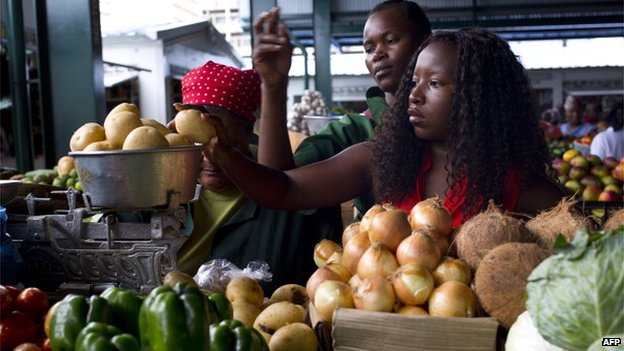Mozambique: Mozambique Finance Profile
2015/01/26

Mozambique's economy has experienced significant increase and structural change over the completed two decades, supported in part by large investments in the mining sector and strong inflows of foreign direct investments and overseas development aid Real GDP increase rate averaged 7.25 % in the years between 2006 and 2011 and projection for 2012 and 2013 are of 7.5 and 8.4 % respectively.
While Mozambique's economy has experienced significant increase over the completed few years following a decade of restructuring, financial markets remain relatively thin and characterized by low levels of intermediation, high costs, and large interest rate spreads.
The banking system, comprised of 18 banks by end 2011, lacks competition since 85% of the total financial sector's assets are concentrated in the three major banks which are closely linked to the Portuguese banking industry.
Soundness has improved following the restructuring of problem banks and the sector as a whole is well capitalized and highly liquid, with a ratio of non-performing loans to total loans at 2.3 %. The banking sector has continued to expand in recent years as deposit money bank assets increased from 16 % of GDP in 2006 to 32 % in 2010 and private credit by deposit money banks expanded from 9 % to 23 % of GDP over the same period. Despite a significant expansion in the number of intermediaries operating in the country, the sector remains relatively shallow and highly concentrated, with the three major banks dominating the country's economy. Concentration risks are as well high, with lending activities of small and medium-sized banks often concentrated in a few key sectors such as energy or commodities, while larger banks have tended to keep significant foreign investment deposits in parent and correspondent banks abroad.
Authorities have, over the completed few years, continued to pursue reforms to strengthen the banking supervisory framework. Key efforts have included implementing significant amendments to the country's banking law, adopting the International Financial Reporting Standards (IFRS) for the banking sector, enhancing supervisory capacities and home-host supervisory relationships, inclunding developing the foundations for risk-based supervision mechanisms. New legislation on intermediation costs, enacted in 2009, has as well aimed to improve transparency and standardized commission charges and fees.
Despite recent increase in the in general economy, access to finance remains limited, particularly outside urban areas. Structural impediments to financial intermediation, lack of competition, high costs and interest spreads in the banking sector and a large informal sector, combined with the related lack of collateral and legal documentation, contribute to wide-spread financial exclusion across the country. As of 2011, only 2.7 % of the adult people were borrower with a commercial bank, with only 6 ATMs per 100,000 adults.
The microfinance sector has experienced significant increase in recent years, supported by strong government efforts to encourage the development of the sector by lowering capital requirements and start-up costs. However, the sector remains small and highly concentrated, and is still not systemically significant. High levels of non-performing loans and poor reporting records in some MFIs, and very low minimum capital requirements for rural MFIs as well present potential sources of risk.
Mozambican capital markets remain relatively shallow and activity on the stock market - the "Bolsa de Valores de Moçambique"- is low.
The fixed gain market has expanded in recent years. Issuance of government securities is dominated by short-term treasury bills with maturities of one year and bellow, though some long-term bonds are as well in circulation. In all, 10 treasury bonds have been issued and listed on the Mozambique Stock Exchange (BVM) between 1999 and 2009. As of March 2013, the country received long-term sovereign ratings of B by Fitch and B+ by Standard and Poor's.
Corporate bonds are as well featured on the market, but issuance remains relatively small and mostly limited to financial institutions and telecommunication firms. The investor base for both government and non-government securities is largely dominated by commercial banks, though a few insurance companies and investment management institutions are as well active in the market. Corporate and government bonds are traded on the Stock Exchange and only one dealer operates in the country, with all other brokers incorporated into commercial banks which as well act as primary dealers for Treasury bills. The secondary market remains underdeveloped and comprised mostly of transactions on the Stock Exchange. There is instantly no active derivatives market.
Mozambique's pension system is largely dominated by the national-run obligatory PAYGO system, though a few small private corporate pension funds are as well present.
The insurance sector, for its part, remains small and underdeveloped, accounting for less than 1% of GDP. Remittances play a minor role in the Mozambican economy. 2010 estimates indicate that annual remittances represented less than 1.5 % of annual GDP.
- Mozambique News
-
- DJIBOUTI CITY: East Africa moves to curb used car imports, boost local assembly plants
- CHINA: Support from China for the industrialisation of Angola and Mozambique
- MOZAMBIQUE: Mozambique seeks investors interested in graphite processing in Ancuabe
- MOZAMBIQUE: Mozambique government wants to increase financial inclusion of the population
- BOTSWANA: Routes Africa forum aims to improve African air connectivity
- BOTSWANA: Economic integration is helping boost trade and investment in Africa
- Trending Articles
-
- JAPAN: More of the same from Japanese polls next weekend
- GERMANY: VW says US 'Dieselgate' settlement not to be replicated in Europe
- PHILIPPINES: Will services continue to drive the Philippine economy?
- ISRAEL: Israel's tech boom under threat
- CONGO BRAZZAVILLE: Congo: Total abandons oil field citing decrease in global oil prices
- KENYA: Nairobi to host 14th UN conference on trade and development






.gif?1356023993)

